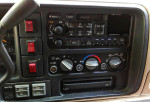Helping Attorneys Access Expertise
"Eric worked with us on two matters involving very different technologies. Both times he solved our problems on time and on budget, and with no handholding. I have retained many experts over my 20+ year law career; Eric has been the easiest to work with and has given us the best results." - Fred Hadidi, Chao Hadidi Stark & Barker LLP
"you should be giving depositions as a full-time career" - attorney after deposition
"we want you to stay involved in the case, your insight to date has been invaluable" - attorney
Past Cases
Check out some Past Cases
Contact Us Today!
To discuss your needs, schedule a conference call or find out more about the services we offer, please call 570-972-1166 or send us an email.
Or use our contact form.
Our Services
We offer a wide array of services tailored to the needs of our clients. See an overview of our services.
Featured Case
AUTOMOTIVE SUPPLIER SUED - posted Sept-2013
The case involved a component subsystem for a dash-mounted entertainment assembly. The supplier of the subsystem was sued for excessive field returns of the entertainment assembly, based on quantity of subassembly replacement parts used, with damages claimed to be in the tens of millions of dollars. Eric Langberg was retained by the defendant to investigate the subassembly and determine if the subassembly was the primary driver for field returns of the entertainment assembly. Exemplars were examined to evaluate normal operation and potential failure modes. Documents from the manufacturer (defendant) and the customer (plaintiff) were evaluated, including specifications, purchase agreements, warranty/repair center data, system schematics, design/development history, quality assurance procedures, and the field return process. Eric was able to show that there was a known possibility of end-user-induced damage, but that the plaintiff had refused to permit a design change to correct the problem, even after the manufacturer provided proof that the design change had been validated and would eliminate this type of damage. In addition, it was proven that the customer required the manufacturer to include the customer’s components in its subassembly and that these components were known to have problems which exhibited as failures in the field. Further, Eric was able to demonstrate that the returns and repair process was insufficient to determine root cause for failures, and repair records included a large number of replacement parts used even when the symptoms and end-user complaints indicated the return had nothing to do with the subassembly. The subassembly was also controlled by firmware developed by the customer, which was also shown to have known errors that could appear to the end user as failure of the subsystem. The case was settled substantially in defendant’s favor.



